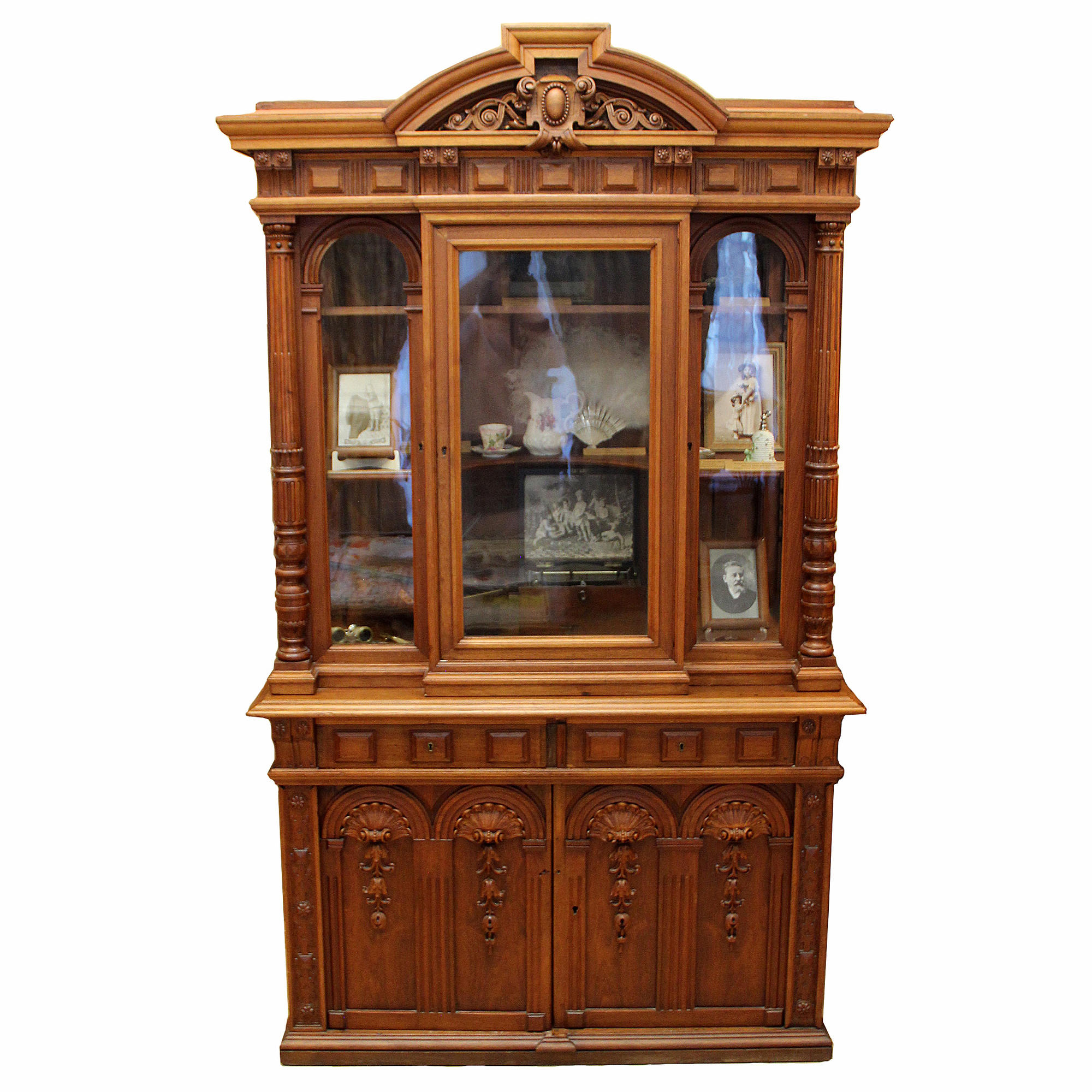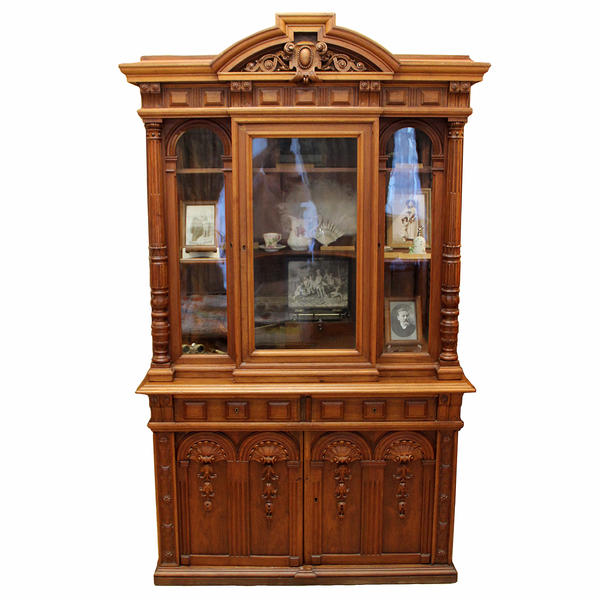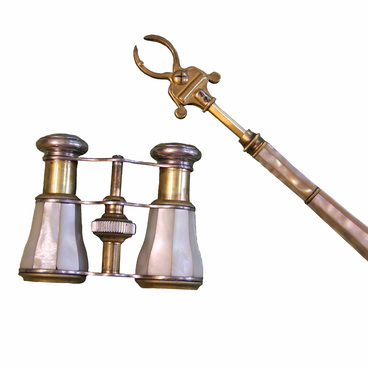The first buffets appeared in the Middle Ages, but buffets looking similar to the modern ones began to appear only by the 17th century in France.
Buffet
Время создания
Late 19th century
Размер
212x59x124 cm
212x59x124 cm
212x59x124 cm
Техника
Oak, walnut, pine, glass, metal
Выставка
3
Открыть в приложении#1
Buffet
#3
#10
Buffets of the 17th century have remained virtually unchanged since then. The shelves of the top were behind glass doors and could be locked with a key. They were designated for storing fragile and expensive crystal glassware, wine bottles and vases with fruits. The lower retractable drawers were designated for items of cutlery, while the closed compartment at the very bottom of the buffet was intended for massive porcelain things, like dishes, bowls or teapots. In Germany they used the lower shelf of the buffet with a large niche for storing beer mugs or massive souvenirs.
#11
In Russia, buffets became widely known by the 19th century. Low and oblong buffets were often placed in dining rooms, they were intended for storing utensils for everyday use. There were also corner buffets, which later became known as gorka - their design allowed to place this piece of furniture in the corner of the room.
#12
In Russia the large niche on the bottom shelf was intended for samovars, which would be installed on a tray, or for bouillottes - metal devices designed to heat water. It was also used for preliminary laying out of appliances for table-setting. Later they began to use it to cook snacks on, and the word buffet received another meaning - a place where one could have a snack. In the 18th century the word buffet began to refer not only the piece of furniture, but also the room where it was placed. It was usually located next to the kitchen. The room was used for storing ready cold meals and drinks.
#13
The buffets were made of natural wood: oak, ash and beech. Such items were resistant to fading and temperature changes and persisted for a longer time. Special attention was given to their decoration. Light tones were rare, they were mostly painted in dark and bright colors. Thin plywood boards, inserted into a frame, were often decorated with symmetrical figures of angels or flowers in pots. On smooth surfaces of the buffet they depicted city landscapes, separate buildings, ladies in lush outfits or ornaments. One of the most common decorations was artistic wood carving in the form of geometric and plant patterns.
#5
The buffet, exhibited in the museum, was made in the late 19th century. It was located in the buffet room next to the dining room of the Klaudt Mansion. According to the surviving catalogues, prior to 1917 buffets like this one cost more than 100 rubles.
читать дальшескрыть
00:00
00:00
1x
Buffet
Время создания
Late 19th century
Размер
212x59x124 cm
212x59x124 cm
212x59x124 cm
Техника
Oak, walnut, pine, glass, metal
Выставка
3
Открыть в приложении
Поделиться



